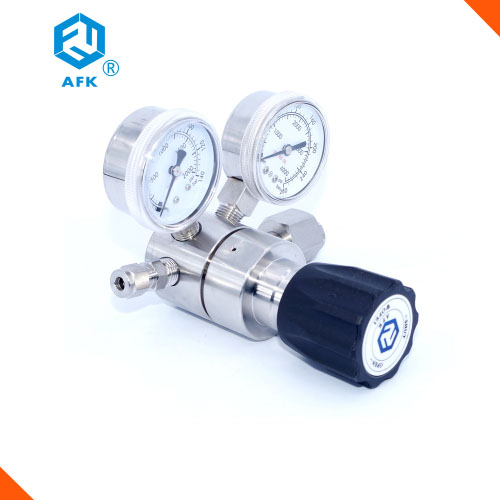
Functions
It can be divided into two types: centralized type and post type according to different structures, it can be divided into two types: single-stage and double-stage;
Working Principle
The difference can be divided into two types: positive acting and negative acting. At present, common domestic pressure reducers are mainly composed of single-stage reaction type and two-stage hybrid type (the first stage is a direct acting type and the second stage is a reaction type).
According to Medium
The difference can be divided into two types: positive acting and negative acting. At present, common domestic pressure reducers are mainly composed of single-stage reaction type and two-stage hybrid type (the first stage is a direct acting type and the second stage is a reaction type).
According to Material
It can be divided into stainless steel 316 pressure regulator, stainless steel 304 pressure regulator, stainless steel 201 pressure regulator, brass pressure regulator, nickel plated brass pressure regulator, nickel plated brass pressure regulator, cast iron pressure reducer, carbon steel pressure reducer .
The use of a pressure reducer should follow the following rules:
1. The action must be slow when deflating the oxygen cylinder or opening the pressure reducer. If the valve opening speed is too fast, the temperature of the gas in the working part of the pressure reducer is greatly increased due to adiabatic compression, which may cause the parts made of organic materials such as rubber packing and rubber film fibrous gaskets to catch fire and burn out. The pressure reducer is completely burned out. In addition, due to the static sparks generated by the rapid deflation and the oil stain of the pressure reducer, it will also cause fire and burn the parts of the pressure reducer.
2.The oxygen cylinder must be slow when deflating or opening the pressure regulator. If the valve opening speed is too fast, the temperature of the gas in the working part of the pressure regulator is greatly increased due to adiabatic compression, which may cause the parts made of organic materials such as rubber packing and rubber film fibrous gaskets to catch fire and burn out. The pressure reducer is completely burned out. In addition, due to the static sparks generated by the rapid deflation and the oil stain of the pressure reducer, it will also cause fire and burn the parts of the pressure reducer.
3. Precautions before installing the pressure regulator and when opening the gas cylinder valve: Before installing the pressure regulator, slightly tap the bottle valve and blow off the dirt to prevent dust and moisture from entering the pressure reducer. When opening the gas cylinder valve, the gas outlet of the cylinder valve should not be aimed at the operator or others to prevent the high pressure gas from suddenly rushing out and hurting people. The joint between the air outlet of the pressure regulator and the gas rubber pipe must be tightened with annealed iron wire or clamp to prevent the danger of disengagement after air supply.
4. The pressure regulator must be checked regularly, and the pressure gauge must be checked regularly. This is done to ensure the reliability of pressure regulation and the accuracy of pressure gauge readings. If you find that the pressure reducer has air leakage or the pressure gauge needle does not work properly during use, it should be repaired in time.
5. Freezing of the pressure reducer. If the pressure reducer is found to be frozen during use, use hot water or steam to thaw it, and never use flame or red iron to bake it. After the pressure reducer is heated, the remaining water must be blown off.
6. The pressure reducer must be kept clean. The pressure reducer must not be contaminated with grease or dirt. If there is grease, it must be wiped clean before use.
7. Pressure reducers and pressure gauges for various gases must not be exchanged. For example, pressure regulators used for oxygen cannot be used in systems such as acetylene and petroleum gas.
Post time: Mar-04-2021